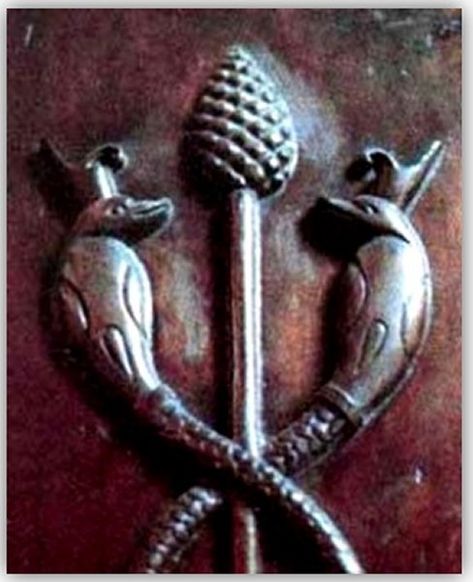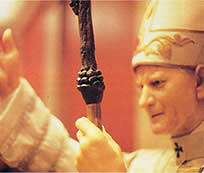Pineal Gland History
The pine cone features richly in cave paintings, pictographs, petroglyphs, sculptures and artifacts from many ancient cultures. The placement of the pine cone in many ancient drawings and artifiacts is symbolic of spirituality, of eternal life, of elevated consciousness, of spiritual sight, of spiritual power, of higher dimensional awareness, of human connection with the divine, and of similar themes. For example, the Egyptian Staff of Osiris, which was dated to approximately 1224 BC, depicts two intertwining serpents rising up to meet at a pinecone. This displays notable symbolic parallels to the Indian idea of “Kundalini,” which is a spiritual energy in the body depicted symbolically as serpents rising up helically from the base of the spine to the Pineal Gland at the moment of enlightenment. As another example, the most prominent god in the Hindu tradition, Shiva, is consistently depicted with coiled hair shaped like a pinecone interwoven with serpents.

Moving closer to modern times, the Romans built an enormous bronze sculpture named the “Pigna,” a gignantic pinecone three stories tall. The Pigna was in a large fountain overflowing with water next the Temple of Isis in Ancient Rome. Today, that huge statue is located directly in front of the Vatican in the “Court of the Pinecone.” Indeed, the sacred staff carried by the Pope has a pine cone near the top, apologetically topped with a cross.

Christ Seed Book Available – Christ Seed Explained
For info about the Christ Seed book, please click Christ Seed Book Christ Seed Explained.

